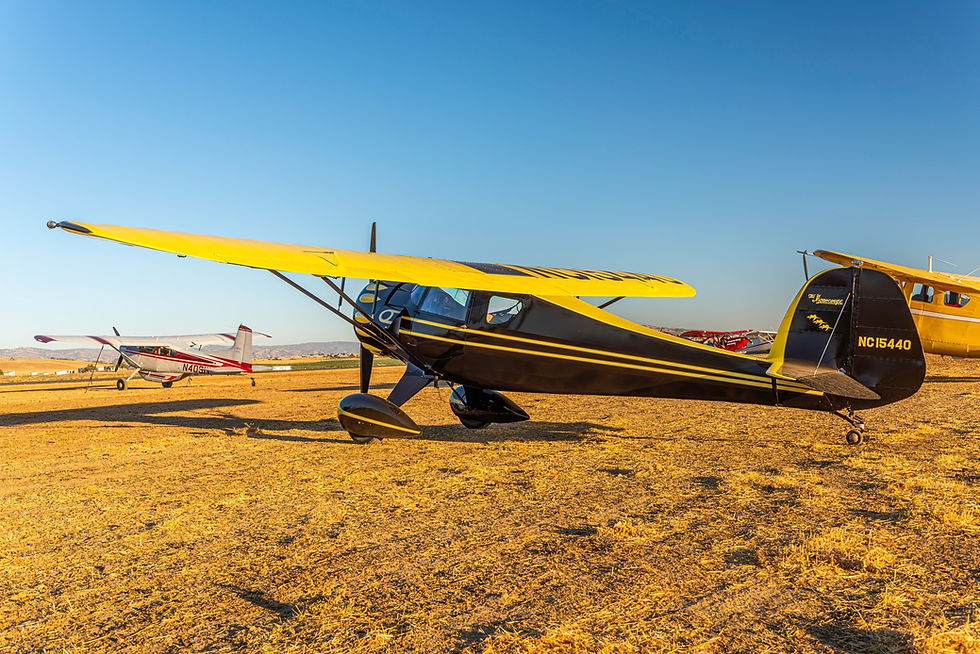
Open During Special Events and
By Appointment
THE CALDWELL COLLECTION AT MUSTANG FIELD
Small but Mighty: The Monocoupe at Mustang Field
At first glance, the Monocoupe seems almost toy-like—small, compact, and undeniably beautiful. Despite its wingspan being over 30-feet and over 20-feet from tip to tail, it feels much smaller than its contemporaries. It's sleek, flowing lines and artful curves set it apart. From the reverse taper of the fuselage to the elegant Art Deco-inspired wing design, every inch of this aircraft exudes style.
The Monocoupe traces its origins to the late 1920s, born from the Central States Airplane Company, which soon became the Mono Aircraft Division of Velie Motor Corporation. With deep roots in the early aviation boom, the company changed hands multiple times—through Lambert Aircraft, Monocoupe Aeroplane and Engine Corporation, and even Universal Molded Products—each transition adding a new chapter to its story. Despite its complex history, one thing remained constant: the Monocoupe’s reputation for speed and innovation.
The Caldwell Collection’s Monocoupe 90A was built in 1936, originally powered by a Lambert 266 radial engine producing 90 horsepower. At some point, it was upgraded to a 145-horsepower Warner Super Scarab, though it remains officially designated as a 90A. Sporting a striking black and "speed yellow" paint scheme, it looks as fast as it flies. With an Aeromatic auto-adjusting propeller, Cleveland wheels and brakes, and a rare alternator for a Warner-powered aircraft, this Monocoupe is as functional as it is eye-catching.
Though designed for an era of smaller pilots, the Monocoupe remains a thrill to fly—fast, nimble, and full of personality.


The Tiny Titan













